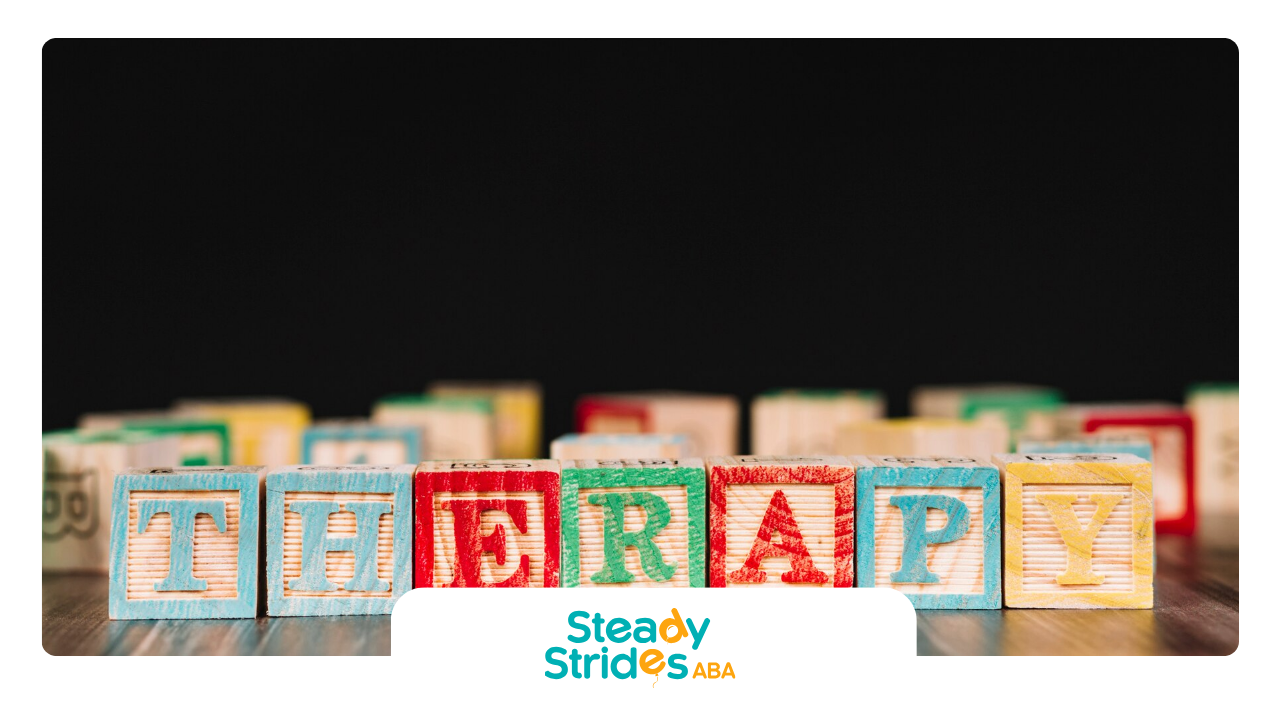Applied Behavior Analysis (ABA) therapy is a widely recognized and effective treatment approach for individuals with autism and other developmental disorders. This evidence-based therapy focuses on understanding and improving specific behaviors to enhance the quality of life for individuals and their families. In this comprehensive guide, we will explore what ABA therapy is, its core principles, methodologies, and the benefits it offers.
The Foundations of ABA Therapy
ABA therapy is rooted in the principles of behaviorism, a theory that emphasizes the study of observable behaviors and the environmental factors that influence them. The primary goal of ABA therapy is to increase positive behaviors and decrease negative or harmful behaviors through systematic interventions. This approach is tailored to each individual's unique needs and involves continuous assessment and data collection to track progress and adjust strategies as necessary.
Key Principles of ABA Therapy
- Behavioral Assessment: The first step in ABA therapy involves conducting a thorough assessment of the individual's behavior. This includes identifying specific behaviors that need to be increased (e.g., communication skills, social interactions) or decreased (e.g., aggression, self-injury). The assessment also considers the environmental factors that may influence these behaviors.
- Individualized Intervention Plans: Based on the assessment, a personalized intervention plan is developed. This plan outlines specific goals and objectives, along with the strategies and techniques that will be used to achieve them. The plan is tailored to the individual's strengths, needs, and preferences.
- Positive Reinforcement: One of the core principles of ABA therapy is positive reinforcement. This involves rewarding desired behaviors to increase the likelihood that they will occur again in the future. Reinforcers can be tangible (e.g., toys, treats) or social (e.g., praise, attention) and are chosen based on what is motivating for the individual.
- Data Collection and Analysis: ABA therapy relies heavily on data collection to monitor progress and make informed decisions. Data is collected on specific behaviors during each therapy session and is analyzed to determine the effectiveness of the intervention. This data-driven approach ensures that the therapy is responsive and adaptive to the individual's needs.
- Generalization and Maintenance: The ultimate goal of ABA therapy is to help individuals apply the skills they learn in therapy to real-life situations. Generalization involves teaching skills in various settings and with different people to ensure that the behaviors are not limited to the therapy environment. Maintenance strategies are also implemented to ensure that the behaviors continue over time.
ABA Therapy Techniques and Strategies
ABA therapy encompasses a variety of techniques and strategies designed to address different behaviors and learning needs. Some of the most commonly used techniques include:
- Discrete Trial Training (DTT): DTT is a structured teaching method that breaks down complex skills into smaller, manageable components. Each component is taught individually through repeated trials, with positive reinforcement provided for correct responses. This method is particularly effective for teaching new skills and behaviors.
- Natural Environment Teaching (NET): NET focuses on teaching skills in the individual's natural environment, such as at home or in the community. This approach promotes generalization by helping individuals learn and practice skills in the contexts where they will be used.
- Pivotal Response Treatment (PRT): PRT targets pivotal areas of a child's development, such as motivation and self-management. By focusing on these key areas, PRT aims to produce broad improvements in communication, social skills, and behavior.
- Verbal Behavior (VB): VB is an approach that emphasizes the functional use of language. It involves teaching language and communication skills by focusing on the purpose of the words and how they are used in different contexts. This approach helps individuals develop more effective and meaningful communication.
- Task Analysis: Task analysis involves breaking down complex tasks into smaller, sequential steps. Each step is taught individually, and the individual is guided through the task step-by-step until they can complete it independently. This method is useful for teaching self-care and daily living skills.
- Social Skills Training: Social skills training focuses on teaching individuals the skills needed to interact effectively with others. This includes skills such as initiating conversations, taking turns, and understanding social cues. Social skills training often involves role-playing, modeling, and practice in natural settings.
The Benefits of ABA Therapy
ABA therapy offers numerous benefits for individuals with autism and other developmental disorders. Some of the key benefits include:
- Improved Communication Skills: ABA therapy helps individuals develop functional communication skills, whether through spoken language, sign language, or alternative communication systems. Improved communication enhances the individual's ability to express their needs and interact with others.
- Enhanced Social Skills: Through targeted interventions, ABA therapy helps individuals develop essential social skills. This includes skills such as making eye contact, sharing, and understanding social norms. Improved social skills can lead to better relationships and increased participation in social activities.
- Reduction of Challenging Behaviors: ABA therapy is effective in reducing challenging behaviors such as aggression, self-injury, and tantrums. By identifying the underlying causes of these behaviors and implementing appropriate interventions, ABA therapy helps individuals develop more appropriate ways to express themselves.
- Increased Independence: ABA therapy focuses on teaching self-care and daily living skills, such as dressing, grooming, and meal preparation. These skills increase the individual's independence and ability to function in various settings.
- Academic Success: ABA therapy can support academic achievement by teaching skills such as attending to tasks, following instructions, and completing assignments. These skills are critical for success in school and other learning environments.
- Improved Quality of Life: By addressing a wide range of behaviors and skills, ABA therapy enhances the overall quality of life for individuals and their families. The skills and behaviors learned in ABA therapy can lead to greater independence, better relationships, and increased participation in community activities.
ABA Therapy for Different Age Groups
ABA therapy is effective for individuals of all ages, from young children to adults. The approach and focus of the therapy may vary depending on the age and developmental level of the individual.
- Early Intervention for Young Children: Early intervention is critical for young children with autism. ABA therapy for young children often focuses on foundational skills such as communication, social interaction, and play. Early intervention can lead to significant improvements in these areas and set the stage for future learning and development.
- School-Aged Children: For school-aged children, ABA therapy may focus on academic skills, social skills, and reducing challenging behaviors that interfere with learning. Collaboration with teachers and school staff is essential to ensure that the skills learned in therapy are generalized to the classroom setting.
- Adolescents and Teens: ABA therapy for adolescents and teens may address more complex social skills, self-management, and preparation for adulthood. This can include vocational training, independent living skills, and developing healthy relationships. Therapy may also focus on managing the unique challenges and changes that occur during adolescence.
- Adults: ABA therapy for adults can support continued skill development and independence. This may include vocational training, community participation, and improving quality of life. Therapy can also help adults with autism manage any ongoing challenges and achieve their personal goals.
The Role of Caregivers and Families in ABA Therapy
Caregivers and families play a vital role in the success of ABA therapy. Their involvement and support are crucial in ensuring that the skills and behaviors learned in therapy are generalized and maintained in everyday life.
- Active Participation: Caregivers and families are encouraged to actively participate in ABA therapy sessions. This involvement helps them understand the strategies and techniques used in therapy and how to implement them at home.
- Consistent Implementation: Consistency is key to the success of ABA therapy. Caregivers and families can support the individual's progress by consistently implementing the strategies and interventions recommended by the therapist.
- Collaboration with Therapists: Open communication and collaboration with ABA therapists are essential. Caregivers and families can provide valuable insights and feedback to help tailor the therapy to the individual's needs.
- Support and Encouragement: Providing support and encouragement to the individual is important for building confidence and motivation. Celebrating small successes and progress can reinforce positive behaviors and promote continued growth.
Conclusion
ABA therapy is a powerful and effective approach for helping individuals with autism and other developmental disorders achieve their full potential. By focusing on increasing positive behaviors and reducing negative behaviors, ABA therapy enhances communication, social skills, independence, and overall quality of life. Through personalized interventions, continuous assessment, and the support of caregivers and families, ABA therapy provides individuals with the tools they need to thrive.
At Steady Strides, we are committed to delivering high-quality ABA therapy services tailored to meet the unique needs of each individual. Our team of dedicated professionals works closely with families to ensure the best possible outcomes for those we serve. Whether you are seeking early intervention for a young child or support for an adolescent or adult, Steady Strides is here to help you on your journey toward progress and success.












